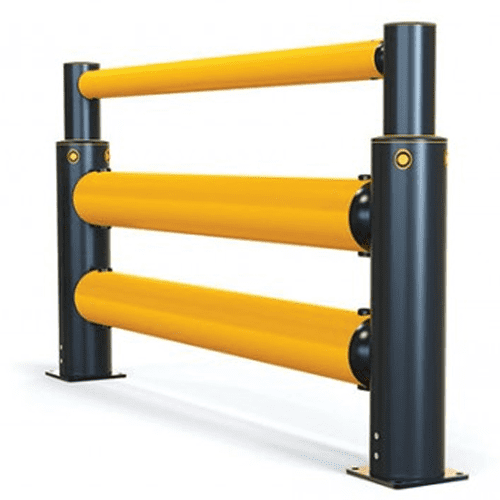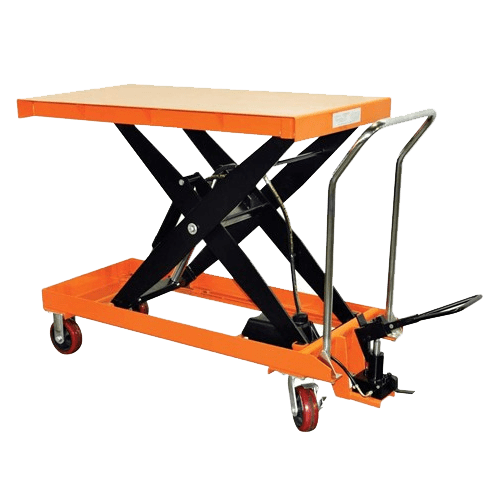Bollards, those sturdy posts often found lining streets, protecting storefronts, and guiding traffic, serve as essential elements in urban landscapes. However, when it comes to choosing between metal and polymer-based bollards, the decision extends beyond mere aesthetics or durability. With sustainability taking centre stage in today’s environmental discourse, it’s imperative to examine how each material choice impacts the planet and whether one option holds a clear advantage over the other. Let’s delve into the debate of metal vs. polymer-based bollards, considering their environmental footprint and effectiveness as safety solutions in warehouses and other industrial settings.
Metal Bollards: The Traditional Choice
Metal bollards, typically crafted from steel or iron, have long been favoured for their robustness and longevity. These heavy-duty barriers offer formidable physical protection solutions, capable of withstanding vehicular impacts and deterring unauthorised access effectively. The durability of metal bollards makes them a popular choice for high-traffic areas, where protection against collisions and security threats is paramount.
However, the production of metal bollards entails significant environmental implications. From the extraction of raw materials to the manufacturing process, metal bollards contribute to resource depletion and carbon emissions. Mining operations required for sourcing metals can result in habitat destruction, soil erosion, and water pollution. Additionally, the smelting and refining processes emit greenhouse gases, further exacerbating climate change.
Moreover, while metal bollards offer durability, they are not immune to corrosion and degradation. Over time, exposure to environmental elements such as moisture, salt, and pollutants can lead to rust and deterioration. As a result, periodic maintenance and protective coatings are necessary to prolong the lifespan of metal bollards, adding to their environmental footprint.
Polymer-Based Bollards: A Sustainable Alternative
In contrast, polymer-based bollards, constructed from high-density polyethylene (HDPE) or other recycled plastics, present a compelling alternative with distinct sustainability advantages. Unlike their metal counterparts, polymer bollards are manufactured using recycled materials, reducing reliance on virgin resources and diverting plastic waste from landfills. By repurposing plastic waste into durable safety solutions, polymer bollards contribute to the circular economy and promote environmental sustainability.
Additionally, polymer-based bollards offer inherent resistance to corrosion, UV degradation, and weathering. Unlike metal bollards, which require protective coatings to withstand environmental exposure, polymer bollards retain their structural integrity and aesthetics over time with minimal maintenance. This longevity not only reduces the need for frequent replacements, but also minimises the environmental impact associated with manufacturing and disposal.
Furthermore, the lightweight nature of polymer-based bollards simplifies transportation and installation, further reducing energy consumption and carbon emissions associated with logistics. Their modular designs and ease of assembly enable quick deployment and reconfiguration, making them ideal for temporary or evolving safety needs.
Effectiveness as Safety Solutions
When assessing the effectiveness of bollards as safety solutions, both metal and polymer-based options offer reliable protection against vehicular collisions and security threats. Metal bollards excel in high-impact scenarios, providing robust physical barriers that deter unauthorised access and safeguard pedestrians and infrastructure. However, their susceptibility to corrosion and maintenance requirements may impact long-term cost-effectiveness and environmental sustainability.
On the other hand, polymer-based bollards offer comparable impact resistance with added sustainability benefits. Their durable construction and resistance to environmental degradation make them ideal for outdoor applications, including pedestrian zones, parking lots, and recreational areas. Additionally, the versatility of polymer bollards allows for customisation and integration of additional features, such as reflective strips, signage, and lighting, enhancing visibility and safety.
Considerations for Different Environments
In environments such as warehouses, distribution centres, and industrial facilities, where safety is paramount, bollards play a crucial role in mitigating workplace hazards and safeguarding personnel. Here, polymer-based bollards offer a compelling safety solution, combining impact resistance with sustainability benefits. With their ability to withstand heavy-duty use and harsh environmental conditions, polymer bollards provide reliable protection while minimising the need for frequent replacements, thus optimising long-term cost-effectiveness and environmental stewardship.
Moreover, the versatility of polymer-based bollards allows for customization and integration of additional features, such as reflective strips, signage, and modular designs. These enhancements enhance visibility, facilitate traffic management, and adapt to evolving safety requirements, making polymer bollards an adaptable choice for dynamic environments.
Tysen Technologies: The Right Choice, Backed By Experience
In urban settings, where aesthetic considerations and public perception play a significant role, the choice between metal and polymer-based bollards may involve a balance between functionality, visual appeal, and sustainability. In some cases, it can be a tough call to make, which is why you can leave it to the expert assistance of Tysen Technologies.
As a provider of equipment and safety solutions that has been assisting customers for over two decades, we have the experience and expertise to help you implement the perfect solution based on your requirements. As a matter of fact, we have been able to help our clients bring down their maintenance overheads in ways they often overlook. We do this by recommending the prudent use of different safety solutions for warehouses, industrial facilities, and other commercial premises after a detailed assessment of the property – a capability we have honed through years of practice. Don’t miss out on the chance to put this to your benefit; contact us today.


















